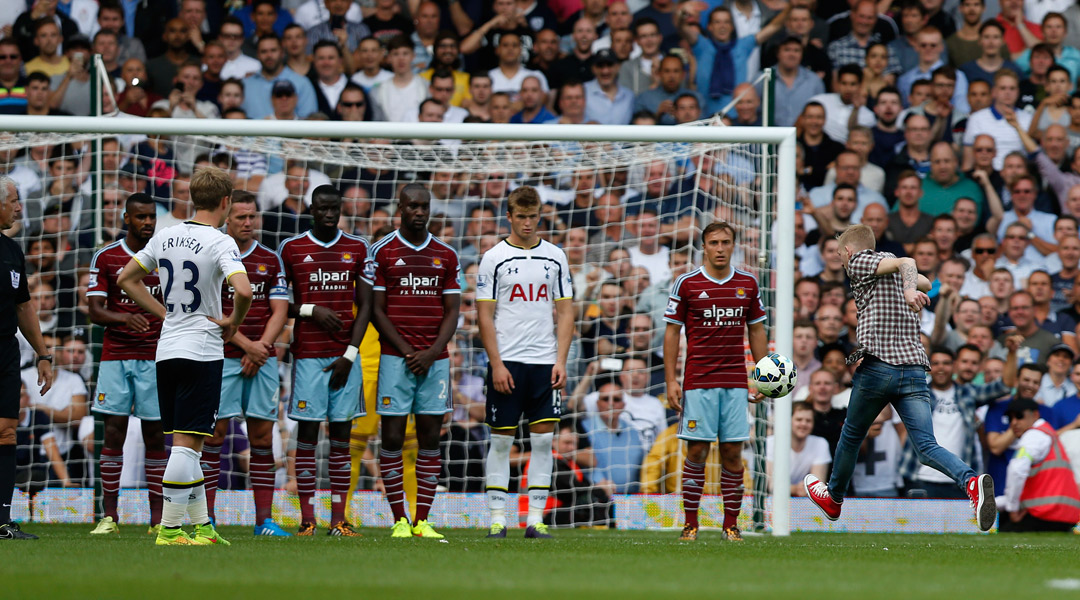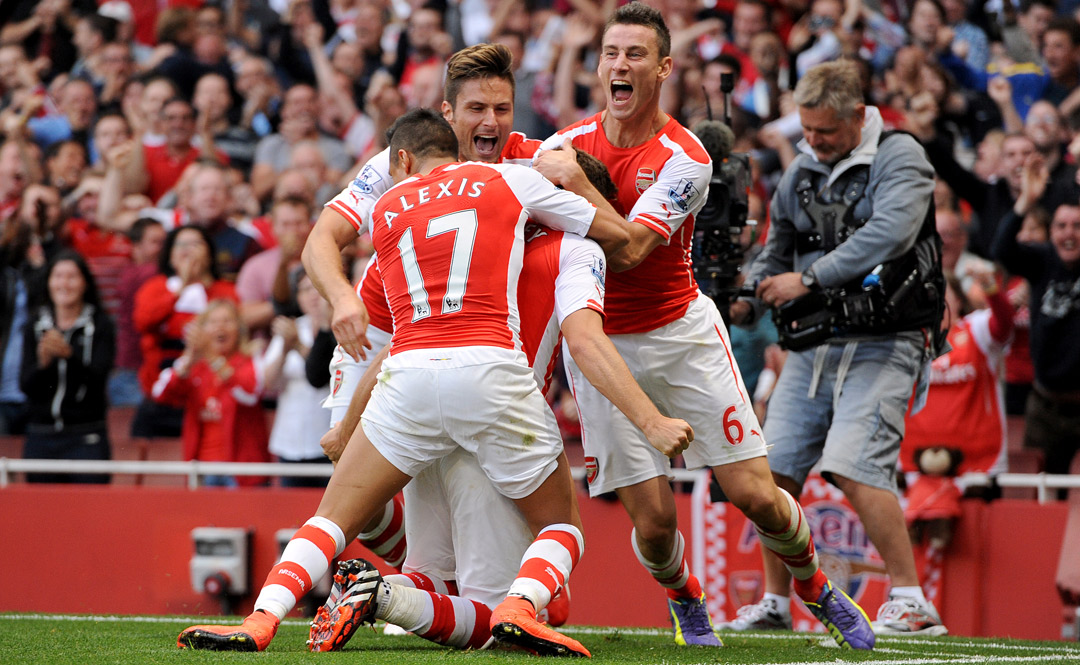Oh, I saw it on a great Vine: why the instant video platform is catering where others aren't
Jem Stone charts the rise of the seven-second sharing sensation giving the Premier League an almighty headache...

The new Premier League season was one hour old. A refreshed 22-year-old West Ham fan, Jordan Dunn, climbed out of his seat and embarked on an 80-yard sprint across the pitch.
Evading several stewards, he ran past Christian Eriksen, who was lining up to take up a Spurs free-kick just outside the box. The fan, despite sporting jeans and a pair of bright red Converse, had decided to adopt free-kick duties himself, and set about striking the ball towards Adrian in the West Ham goal. The Spaniard saved it. The young fan continued his sprint and was eventually arrested. He woke up the next day with a sore head, the prospect of a lengthy ban and a £5,000 fine – but he’d also unwittingly created one of the most shared moments on social media last week.
On Twitter, Gary Lineker joked how he'd “made a better fist of it than Eriksen”, while one bookie claimed: “he’s just done what every football fan has wanted to do.” Soon others were talking up its merits online, watching the match themselves via their own legitimate streams. Minutes later, though, we could all see it for ourselves anyway. An anonymous fan had uploaded it to the relatively new short video clip platform, Vine, and its notoriety spread all over social media. Online articles helped the clip rack up an astonishing 11m+ views (or 'loops') in a matter of days.
There really isn’t anything new about fans using devices to tell the story of being fans, of course. Martin Belam, launch editor of Row Zed, the Mirror’s online football site which frequently uses Vine clips in its stories, argues that sharing and publishing like this has a long tradition. “I kind of see social media as an extension of fanzine culture – people taking an oblique view at the sport, unencumbered with the things that mainstream media have to worry about, like not upsetting clubs, rights holders or football associations,” he says.
Vine, launched only in January 2013, is, along with Instagram Video and the longstanding GIF format, one of several ways in which mobile users can share extremely short video clips. It claims to have 100m users worldwide, and came into its own during the World Cup. The big talking points – Van Persie's wonder goal, the Suarez bite, the crowd 'fanzone' reaction shots, and of course, the vanishing foam – were turned into instant memes generated by a single user pointing a smartphone at his TV, pressing rewind, clicking publish and then distributing the entire moment, for free, a few seconds later.
Upsetting the suits
But this fan-led activity, however rough and ready, and however innocent, is finally upsetting rights holders.
Get FourFourTwo Newsletter
The best features, fun and footballing quizzes, straight to your inbox every week.
Last week the Premier League, mindful of its exclusive contracts with (among others) The Sunday Times and The Sun to provide realtime goals to mobile subscribers, signalled that it was going to collaborate (as it has done with YouTube in previous years) with Twitter to curtail the activities of prolific Vine publishers. Dan Johnson, the League’s Director of Communications, told the BBC: “Ultimately it is against the law. It's a breach of copyright and we would discourage fans from doing it. I know it sounds as if we're killjoys but we have to protect our intellectual property.”
Twitter and Vine merely directed media enquiries to their terms: “Vine users may not post content that violates the rights of a third party.”

A survey of the most popular moments last weekend showed that several Premier League Vine clips (including Jordan Dunn’s Upton Park free-kick) were no longer available a few days after their original posting, although alternative versions had sprung up.
Stuart Fuller, Director of Commercial at online brand protection company Netnames, is doubtful as to the ease with which any clampdown can be sustained. “The motivation of a person in posting Aaron Ramsey’s 90th-minute winner for Arsenal against Crystal Palace on Saturday is not to damage anyone’s intellectual property, but to share the moment with fellow fans,” he says.
“Any rights holder would have to invest significant sums of money in a complex and far-reaching social media monitoring solution that can initially identify a specific keyword (“Arsenal”) and then connect it to a file like a Vine clip. Once they have identified it, they would then have to request enforcement from the media hoster, such as Twitter, by which time there would probably have been another goal scored and the focus shifts once again.”
Filling a void
The leading football Vine Twitter account, @FootballVines, now has over half a million followers and shares some of the best clips daily, created by others, from around the world. Of the last 200 clips it has shared, only a small percentage are goals. The rest are a mix of training ground japes, gaffes, 'tekkers', tunnel footage, memes, laughs and jokes. Only three have been removed or were no longer available.
There is, of course, a long tradition of fans lapping up this type of stuff; Danny Baker’s gaffes and own goals videos from the early 90s, the brief few seasons of Fantasy Football, and Sky’s Soccer AM, now in its third decade, have all satisfied the desire for fans to poke fun at players, clubs and themselves using left-field or unofficial footage.
Some of the more social media-savvy clubs are tackling this demand head on. QPR's award-winning social media team routinely integrate fan activity into their output and use a dizzying array of social media platforms to share news, celebrate success and exploit their access to players on daily basis. The Rs' social media manager Adam Hulme explains: “We always put ourselves into the fans' shoes and ask ourselves where they would like to go on a matchday or what they’d like see. We use [platforms like Vine] to bring fans closer to the players and the club.”
Many fans and Vine users may argue that, like music and film beforehand, new digital tools like Vine are serving to highlight a need among fans that isn’t yet being catered for. Stuart Fuller agrees. “I think that people are genuinely getting bored or saturated by seeing the same footage time and time again,” he says. “Broadcasters will never show pitch invasions, fans bouncing around like loons or Gazza-esque japes because it could be seen as damaging the brand image of associated sponsors or rights holders.”
Says the Mirror's Martin Belam: “It is the unusual thing that gets people sharing. I can understand why rights holders are unhappy with fans posting clips, but then, at the moment, the rights holders aren’t doing anything themselves with this type of content.”
